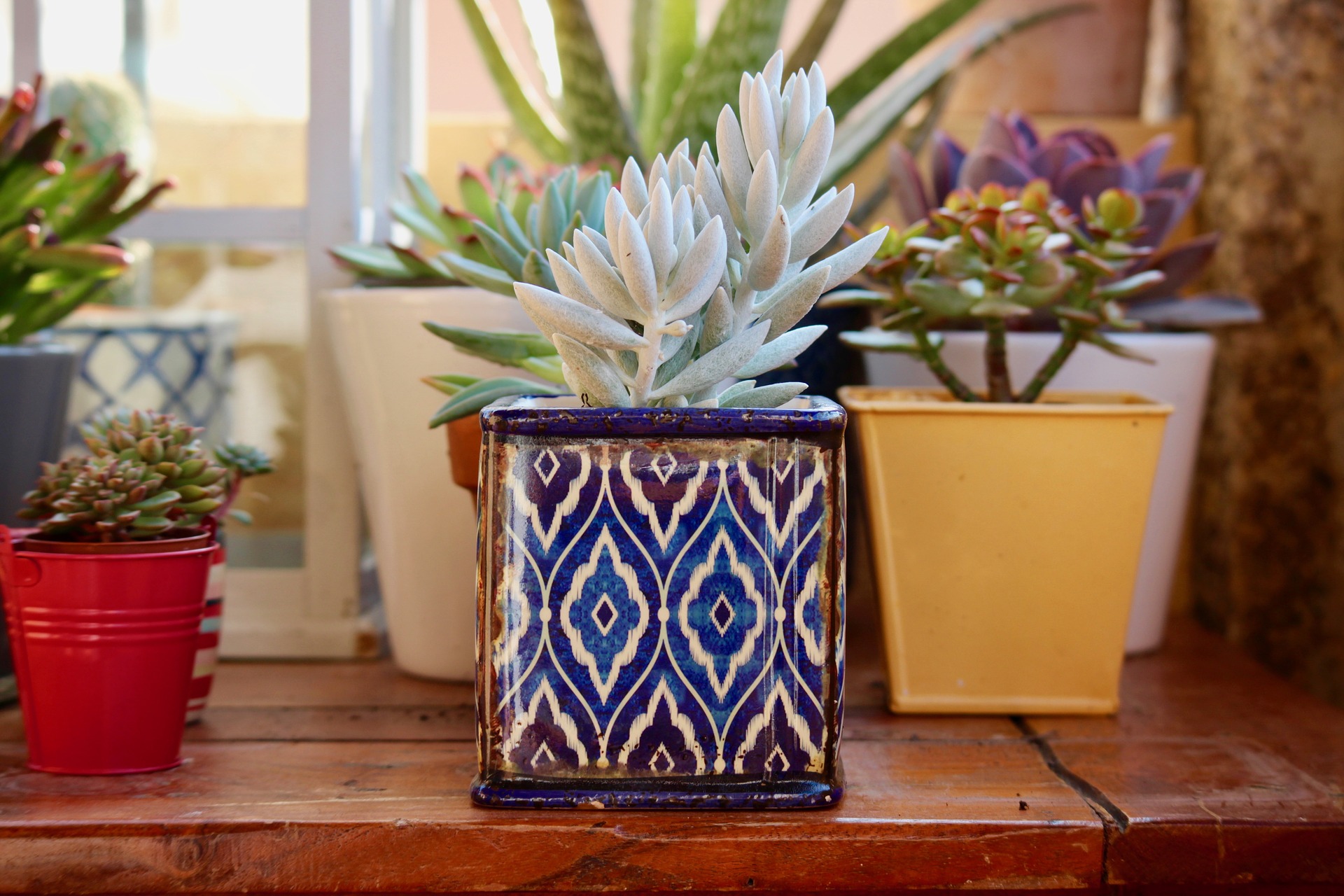
It’s a good idea to put house plants outside to take advantage of the rain, but there are a few pitfalls to avoid. Photo: Creative Commons License
It’s a question we don’t ask very often in San Diego County. But with a nice rainstorm predicted to last throughout the day, it’s an ideal time to explore this question. Why wouldn’t we want to take advantage of the rainfall to save water and give our indoor house plants a healthy drink and a good shower?
The answer seems obvious, doesn’t it? In general, it is a good idea – but there are some pitfalls you need to know about and avoid.

Good Reasons to Let Nature Water Your House Plants
Rain coming straight out of the clouds to water your plants provides several benefits. First, it gives your plants a nice and probably much-needed bath. Rain helps wash off dust and any other dirt or debris that may be on your leaves. If you have house plants with delicate leaves, be careful they aren’t outside in a rare downpour.
Rainwater dissolves the salts and other minerals in your the tap water, which remain in the soil of your plants. San Diego County’s water is exceptionally hard, meaning it contains high amounts of dissolved minerals, specifically calcium and magnesium. Do you notice the white crusty build-up on your kitchen and bathroom fixtures? Does it seem hard to get a decent lather from your soap or shampoo? Those are the effects from the minerals in hard water.
Hard water isn’t a health risk to people. But hard water will cause a layer of salt and calcium carbonate to form on the soil (or roots) which will eventually begin to repel water. Rainwater is naturally “soft” and can help flush these minerals out of the soil in your house plant’s container. A periodic leaching is a good thing.
Rainwater will also clear out the stomata or respiratory pores on your plant’s leaves, improving its ability to take in carbon dioxide and nutrients for photosynthesis. It will be healthier and grow better. This is true for your outdoor garden as well. Have you notice how nicely your plants are growing outside right now after a bit of rare San Diego rain?

Eww! Check your house plants before you bring them back inside in case there are hitchhikers. Photo: Eriger/Creative Commons License
Avoid These Hazards When Putting House Plants Out In The Rain
There are a few things you should take into consideration when you start moving all your house plants outside. Do they actually need watering? Most house plants do best when they are on a regular wet and dry cycle allowing the soil to dry out a bit in between watering.
But in general house plants can tolerate being soaked with rainwater even if the soil is already wet. Rainwater contains more oxygen than tap water. You might think your plants are dangerously waterlogged from sitting out in the rain. It’s a real risk from too much tap water, but the oxygen in rainwater gives you a margin of safety when soil is saturated after a downpour.
Even in our mild climate, rain can be cold. It’s much colder than the normal living conditions of your house plants. You won’t want to leave your house plants outside shivering too long, especially in cold overnight hours. In our inland valleys, temperatures can easily drop into the 40s and into frost range. Bring them back inside before you go to bed and don’t leave them out overnight except in warmer months.

There is no need to add anything to your plant containers but the proper potting soil. Photo: SweetLouise/CreativeCommons License
Wind often comes along with rain. It can knock your house plants over and damage large leaves. Your indoor plants have no natural tolerance to wind. You won’t be happy if one of your nicer, pricey containers blows over and breaks. Find a sheltered area, or collect the rainwater in a bucket and bring it inside for watering.
After the rain, you need to bring the plant back indoors before the overcast clears. Direct sunlight will burn your indoor plants and can cause scorching damage to leaves.
Make a quick check on all your plants in case any hitchhikers found them: slugs or snails, caterpillars, or any other pests. They can quickly infest the rest of the plants in your house. As long as you don’t leave your plants out for more than a day or two, it should not be a significant problem.
Protect your indoor plants from access by kids or pets when they are outside, especially if they have leaves that might be irritating or toxic. Toddlers, pets, and plants don’t usually play nicely together.

Give your house plants a nice drink of rainwater when you can. They will reward you with good health! Photo: PeterFacebook/Creative Commons License
Don’t put your indoor plants with fuzzy leaves out in the rain. They don’t like rain directly hitting them. African violets are a good example, although you can find several African violet experts who think this is OK.
Enjoy our rare rain. If Good Earth Plant Company has gotten you interested in adding more indoor plants without the headache or time commitment of caring for them, let us take care of your plants for you. We would love to turn your home or office into a happy green place! We enrich people’s lives with plants.


 –
–